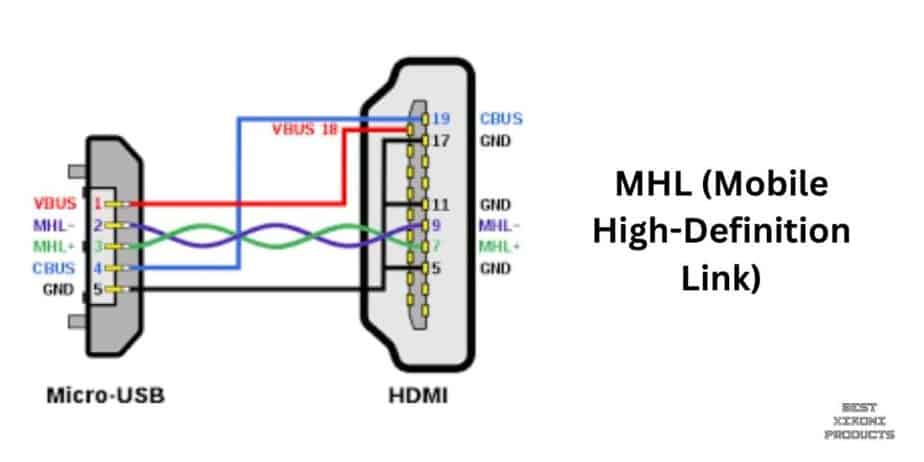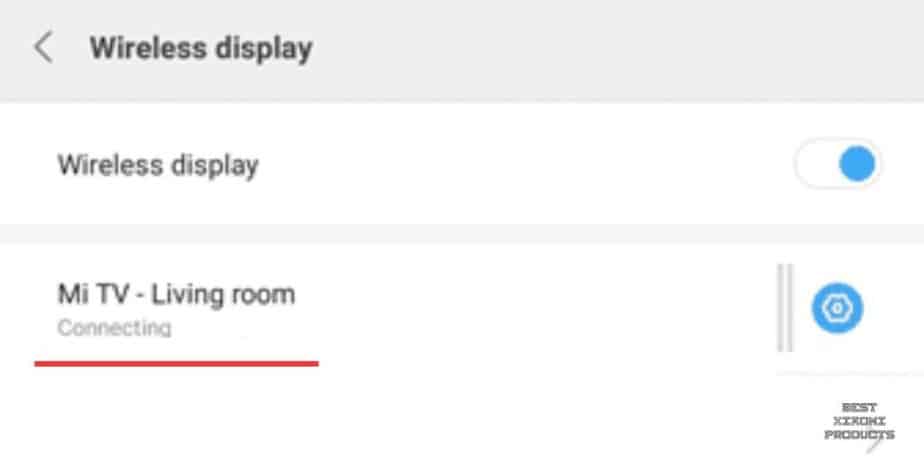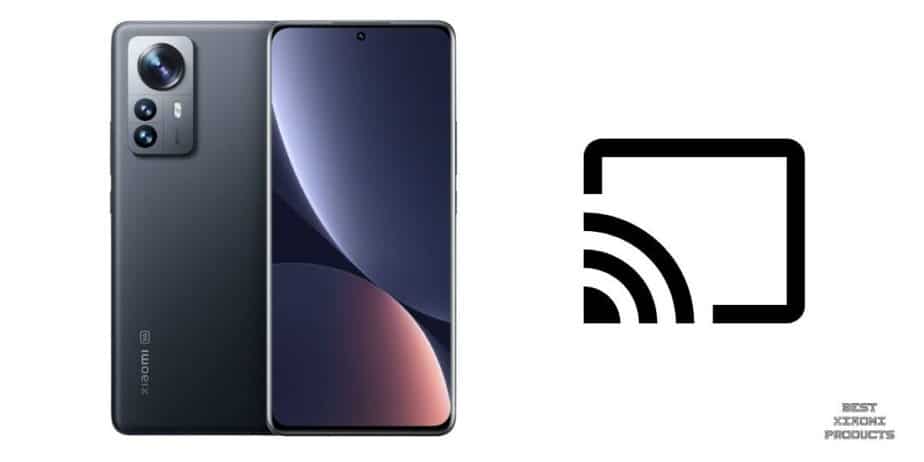
Does Xiaomi Support MHL? Exploring Mobile Connectivity Options with Chromecast and Miracast
Share
If you are a Xiaomi smartphone user looking to connect your device to an external display for a larger viewing experience, you might be wondering if Xiaomi supports MHL technology.
While only the Xiaomi Mi 2 model has MHL support, don't worry! Xiaomi offers alternative wireless options such as Chromecast and Miracast, which allow you to cast and mirror content effortlessly.
In this article, we'll dive into the details of MHL, Chromecast, and Miracast, helping you make the best choice for your Xiaomi device.
Does Xiaomi Support MHL?

As of now, Xiaomi's support for MHL is limited to the Xiaomi Mi 2 model.
MHL (Mobile High-Definition Link) allows you to connect your Xiaomi device to an external display for high-definition audio and video transmission while simultaneously charging your device.
However, newer Xiaomi models do not offer MHL compatibility. If you're looking to connect your Xiaomi smartphone or tablet to an external display, consider alternative wireless options like Chromecast and Miracast, which provide versatile casting and screen mirroring capabilities without the need for a specific MHL cable.
Understanding MHL (Mobile High-Definition Link)

Mobile High-Definition Link (MHL) is a technology standard that enables users to connect their mobile devices, like smartphones and tablets, to external displays such as TVs and monitors.
With MHL, you can transmit high-definition audio and video while charging your device simultaneously.
However, it's important to note that MHL support is not widespread among Xiaomi devices, and only the Xiaomi Mi 2 model offers this functionality.
Using Chromecast on Xiaomi Devices
Chromecast works on Xiaomi smartphones and other devices in a similar way as it does on other Android devices.
Chromecast is a streaming device developed by Google that allows you to cast or stream content from your Xiaomi smartphone, tablet, or computer to a TV or any other display with an HDMI input.

The casting process is straightforward and can be accomplished using compatible apps or the Google Chrome browser.
Here's a step-by-step explanation of how Chromecast works on Xiaomi devices:
-
Ensure Compatibility: To use Chromecast with your Xiaomi device, you'll need a compatible Xiaomi smartphone or tablet running on Android 8.0 or later. Additionally, your TV or display must have an HDMI port and access to a power source to plug in the Chromecast device.
-
Set up Chromecast: The first step is to connect the Chromecast device to your TV. Plug one end of the Chromecast into an available HDMI port on your TV and the other end into a power source using the provided USB cable. Your TV should display the Chromecast setup screen.
-
Install Google Home App: If you don't already have it, download and install the Google Home app from the Google Play Store on your Xiaomi device. This app will help you set up and manage your Chromecast.
-
Connect to Wi-Fi: Follow the on-screen instructions to connect your Chromecast to the same Wi-Fi network as your Xiaomi device. This step is crucial as both devices need to be on the same network for casting to work.
-
Start Casting: Once your Chromecast is set up and connected to the Wi-Fi, open a compatible app on your Xiaomi device. Look for the Cast icon (it looks like a rectangle with a Wi-Fi signal in the corner), usually located in the top right or left corner of the app.
- Select Your Chromecast: Tap on the Cast icon, and a list of available devices will appear. Choose your Chromecast from the list to start casting the content to your TV or external display.
The content from your Xiaomi device will now be mirrored or streamed on your TV via Chromecast.
You can control playback, volume, and other settings from your Xiaomi device while the content plays on the TV.

If you want to cast content from a website or a Chrome tab on your Xiaomi device, open Google Chrome, tap the menu (three dots) in the top right corner, select "Cast," and choose your Chromecast device from the list.
It's essential to note that not all apps support casting, but many popular ones do, including YouTube, Netflix, Spotify, and many others.
Additionally, Xiaomi users can also use Chromecast to cast local content like photos, videos, and music stored on their devices.
Using Miracast on Xiaomi Devices

Miracast works on Xiaomi devices in a similar way as it does on other Android devices.
Miracast is a wireless display technology that allows you to mirror the screen of your Xiaomi smartphone or tablet onto a compatible TV or display without the need for any additional cables or internet connection.
This enables you to share your device's screen in real-time, making it useful for presentations, gaming, or simply enjoying content on a larger screen.

Here's how Miracast works on Xiaomi devices:
-
Ensure Compatibility: To use Miracast with your Xiaomi device, you'll need a Xiaomi smartphone or tablet running on Android 4.2 or later. Additionally, your TV or display needs to support Miracast.
-
Check Miracast Support on TV: First, verify if your TV or external display supports Miracast. Most modern smart TVs and some displays come with built-in Miracast support, which means you won't need any additional hardware to use Miracast.
-
Enable Miracast on Xiaomi Device: On your Xiaomi device, go to the "Settings" menu and look for the "Display" or "Connected devices" section. Within this section, you should find an option for "Wireless Display" or "Cast Screen." Tap on it to enable Miracast.
-
Connect to Your TV: After enabling Miracast on your Xiaomi device, it will start searching for nearby Miracast-enabled displays. Make sure your TV is on and also searching for devices to connect. Once your Xiaomi device detects your TV, select it from the list to establish the connection.
-
Begin Screen Mirroring: Once the connection is established, your Xiaomi device's screen will be mirrored on your TV or external display in real-time. Anything you do on your Xiaomi device, such as opening apps, playing games, or browsing the internet, will be visible on the larger screen.
-
Control from Your Xiaomi Device: While the screen is being mirrored, you can control the content and navigate through your Xiaomi device just as you would normally. Your TV essentially becomes an extension of your Xiaomi device's screen.
- End Mirroring: To stop screen mirroring, go back to the "Wireless Display" or "Cast Screen" menu on your Xiaomi device and choose to stop the connection.
It's important to note that Miracast doesn't rely on an internet connection, as it creates a direct connection between your Xiaomi device and the TV or display.
This makes it a suitable option for scenarios where you don't have access to Wi-Fi or need to avoid potential network latency.
Comparison: MHL vs. Chromecast vs. Miracast
MHL (Mobile High-Definition Link):
-
Advantages:
- High-definition audio and video transmission: MHL supports Full HD and even 4K Ultra HD resolution, ensuring a superior viewing experience on the external display.
- Device charging during connectivity: MHL provides power to the connected mobile device, allowing you to charge your Xiaomi smartphone or tablet while using it with the external display.
-
Disadvantages:
- Requirement for a compatible cable: MHL requires a specific MHL-compatible cable to connect your Xiaomi device to the external display, which might not be as readily available as standard HDMI cables.
- Limited device support: MHL support is not widespread, and only a few older Xiaomi models, like Xiaomi Mi 2, offer MHL compatibility. Newer Xiaomi devices do not have MHL support.
Chromecast:
-
Advantages:
- Wireless connectivity: Chromecast offers a cable-free casting experience, eliminating the need for a physical connection between your Xiaomi device and the TV or external display.
- Versatile streaming options: With Chromecast, you can cast a wide range of content, including videos, music, photos, and even specific apps directly from your Xiaomi device to the TV.
-
Disadvantages:
- Internet dependency: Chromecast requires an internet connection to cast content from supported apps. If your Wi-Fi is slow or unstable, it may affect the streaming quality.
- App compatibility: Not all apps support casting, so you might not be able to cast content from certain apps directly.
Miracast:
-
Advantages:
- Wireless display mirroring: Miracast allows you to mirror your Xiaomi device's screen on the external display in real-time, providing a seamless and straightforward sharing experience.
- Broad compatibility: Many modern TVs and displays support Miracast, making it accessible to a wide range of users without requiring additional hardware.
-
Disadvantages:
- Reliability issues: Miracast performance can vary depending on the Xiaomi device and the external display's compatibility. Some users may experience occasional lag or latency during screen mirroring.
- No internet access during mirroring: While using Miracast, your Xiaomi device's internet connection will be disabled as it establishes a direct connection with the TV or display.
MHL vs. Chromecast vs. Miracast Connectivity and Setup:
MHL: Requires a compatible MHL cable, which might not be as readily available as standard HDMI cables. The setup involves connecting the cable between your Xiaomi device and the external display.
Chromecast: Offers wireless connectivity, and the setup involves plugging the Chromecast device into the HDMI port of your TV and setting it up via the Google Home app on your Xiaomi device.
Miracast: Also offers wireless connectivity, and the setup involves enabling Miracast on your Xiaomi device and connecting it directly to the TV or display with Miracast support.
MHL vs. Chromecast vs. Miracast Video and Audio Quality:
MHL: Supports high-definition audio and video transmission, ensuring excellent quality on the external display.
Chromecast: Provides good video and audio quality, but it may vary depending on your internet connection and app support.
Miracast: Video and audio quality can be good, but some users might experience occasional lag or lower resolution, especially in certain setups.
MHL vs. Chromecast vs. Miracast Device Support:
MHL: Only the Xiaomi Mi 2 model supports MHL. Newer Xiaomi devices do not offer MHL compatibility.
Chromecast: Compatible with a wide range of Xiaomi smartphones and tablets running Android 8.0 or later, as well as other devices with iOS and Windows support.
Miracast: Compatible with many Xiaomi smartphones and tablets running Android 4.2 or later, as well as other devices with Miracast support.
Conclusion:
In conclusion, while Xiaomi's support for MHL is limited to the Xiaomi Mi 2 model, there are alternative wireless options like Chromecast and Miracast that cater to a wider range of Xiaomi users.
Whether you prefer the simplicity of Chromecast or the screen mirroring capabilities of Miracast, Xiaomi offers versatile connectivity options to enhance your viewing experience.
Assess your needs and choose the best option that suits your Xiaomi device and external display setup. Enjoy seamless casting and mirroring as you share your favorite content with friends and family on the big screen!
Related